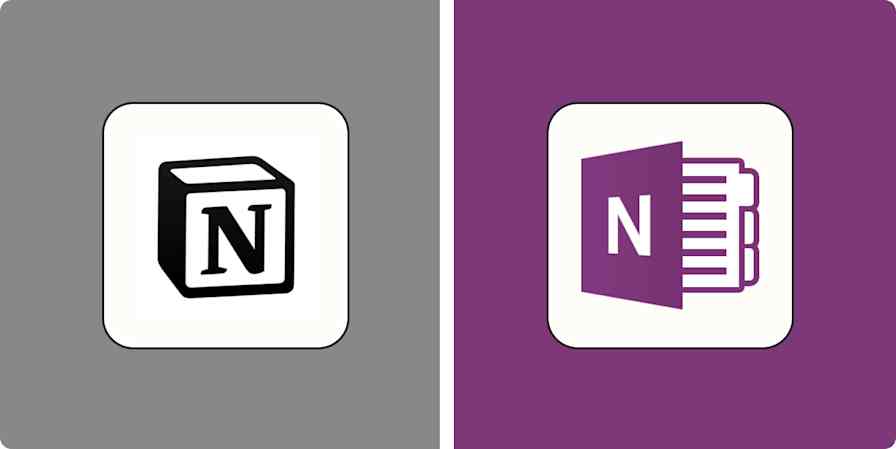Modern note-taking platforms go beyond documenting your thoughts. They offer powerful workplaces to manage your knowledge, no matter where it comes from. Whether that's turning a bunch of data into a live website or visualizing relationships between piles of notes, they've got you covered. Few do it better than Obsidian and Notion.
For years, I've relied on Notion to make sense of the avalanche of digital information I collect, like personal notes, web snippets, movie watchlists, itineraries, work reports—the list goes on. Its versatile interface lets me quickly organize and find it all in a variety of formats, including interactive tables and Kanban boards. At times, though, when I want to focus on jotting down and brainstorming ideas, Notion's limitless options can feel distracting. This is where Obsidian stands out, as its minimal text-focused and private approach is ideal for those who find Notion's all-in-one workspace intimidating.
I spent weeks testing Notion and Obsidian to see how they stack up. Here's what I found.
Table of contents:
Obsidian vs. Notion at a glance
Notion and Obsidian are both heavy-duty note-taking platforms, and their objectives, to an extent, are similar: to help you build a personal wiki. The way they set about it, however, is vastly different. While Notion operates as a broader productivity tool to manage your projects, knowledge, and files, Obsidian works more as a highly flexible writing app.
I'll dig deep into their differences later in this article and my experience with them, but here's a quick breakdown of how their features compare.
| Notion | Obsidian |
|---|---|---|
Ease of use | ⭐⭐⭐⭐ User-friendly and modern design; lower learning curve | ⭐⭐⭐ Outdated, functional interface; high learning curve |
Collaboration | ⭐⭐⭐⭐ Real-time collaboration and sharing with individuals and teams; online publishing | ⭐⭐ No real-time collaboration features; can have asynchronous editors |
Note-taking | ⭐⭐⭐⭐ Versatile block-based editing, where you can mix and match live elements | ⭐⭐⭐⭐ Better for text-focused users with loads of formatting and faster loading times |
AI tools | ⭐⭐⭐⭐ Built-in AI assistant that can generate text, respond to queries, and analyze data | ⭐⭐ No built-in AI; possible to add limited functionality through third-party plugins |
Integrations and customization | ⭐⭐⭐⭐ Numerous built-in third-party app integrations and templates to choose from | ⭐⭐⭐⭐⭐ Diverse marketplace for third-party plugins and themes, which you can turn on and off easily; no direct third-party app integrations; can customize the interface |
Cost | ⭐⭐⭐⭐ Feature-rich free plan, AI functions, and premium perks, like large file imports, cost $20/month | ⭐⭐⭐⭐⭐ Free plan offers access to all features locally; cross-platform sync and E2E encryption costs $4/month |
Both are for power users, but Notion is more user friendly
The first thing you notice about Notion is its inviting design. Like Obsidian, it's capable of advanced functions, but it takes advantage of a clean, spacious layout to ensure it doesn't overwhelm you right away. Its home screen better guides you through the interface, through pre-written starter notes and an AI-powered universal search, where you can ask any query or search how to execute a particular workflow.

In comparison, when you download and boot Obsidian, it asks you to create a new "vault," give it a title, and pick a local folder where you'd like to save your notes. This process is unlike what you'd come across on any other note-taking app, which can make it confusing if you're not a deep tinkerer. It also doesn't help that Obsidian's app skips explaining what a vault is, which local directory is ideal for its operations, and how it will affect your note-taking experience.
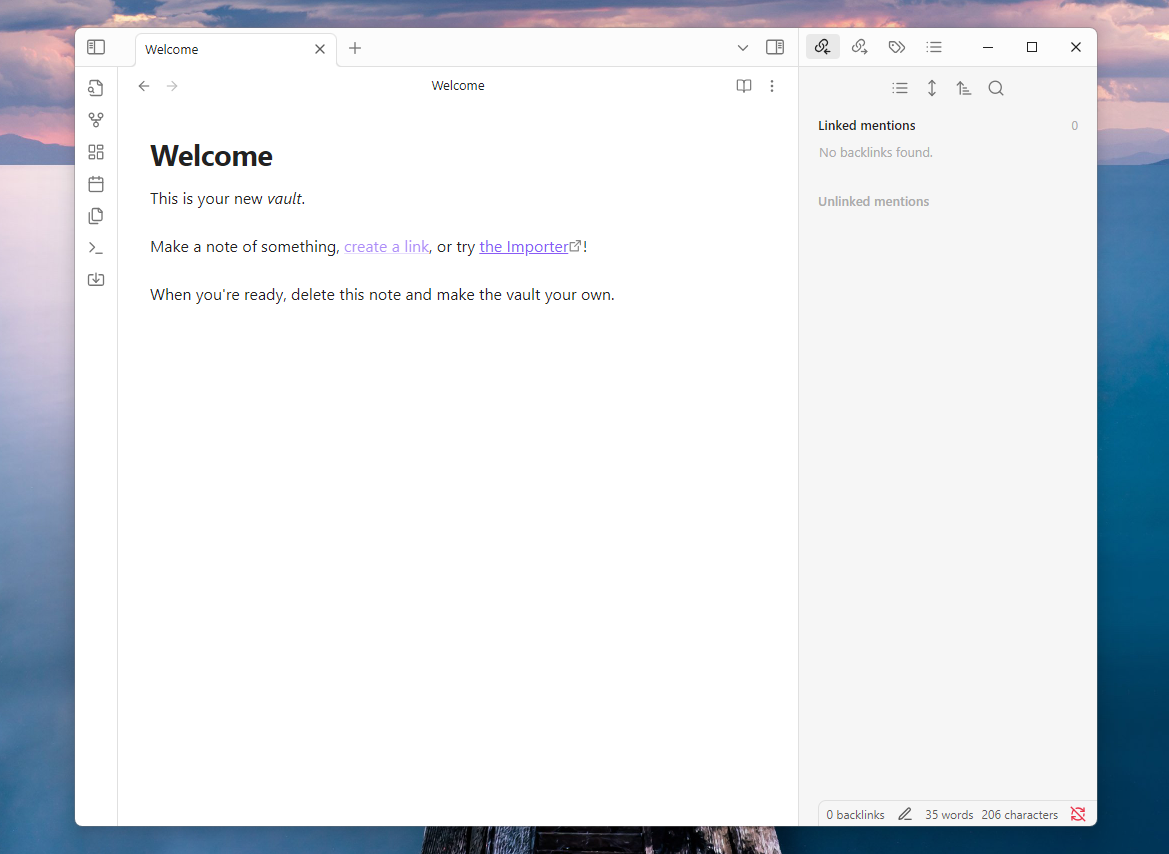
When you finally enter Obsidian, it's completely blank with little description and a massive four-row interface that you'll have to figure out yourself. I had to routinely visit Obsidian's help center to learn buttons I didn't recognize or check whether it had a specific feature.
Notion makes accessing its available tools and options easy with thoughtful prompts. For example, when you select text on Obsidian, it won't bring up any menus to customize it. On Notion, doing so brings up an exhaustive pop-up, where you can find several handy shortcuts to format the text, add a comment to it, ask the built-in AI about it, and more.
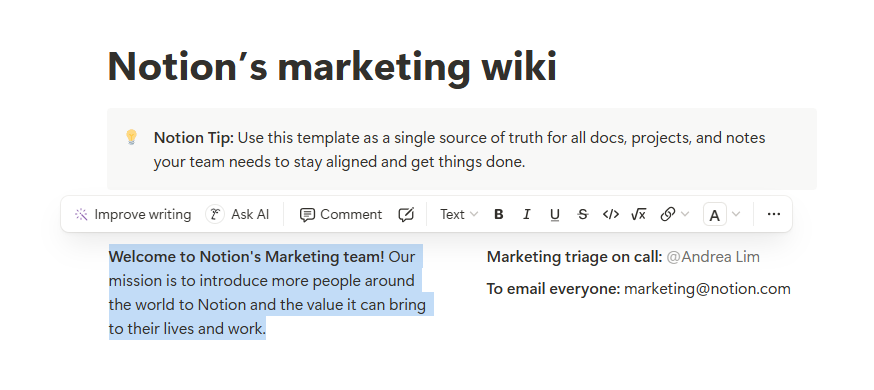
Obsidian is well-suited for a no-frills writing experience
While Obsidian's minimal interface can be off-putting for new users, it turns into its biggest strength once you get the hang of it.
Notion treats each piece of content, whether that's text, images, or tables, as a "block," and blocks are more programmable and dynamic than typical, static elements. That also means content, like text, never appears like it would in a normal document editor. There's more whitespace between lines and around the text, and you have limited options to personalize the size, font, and alignment. If you'll spend most of your time writing in these apps, Notion's strict control over the text may not be ideal.
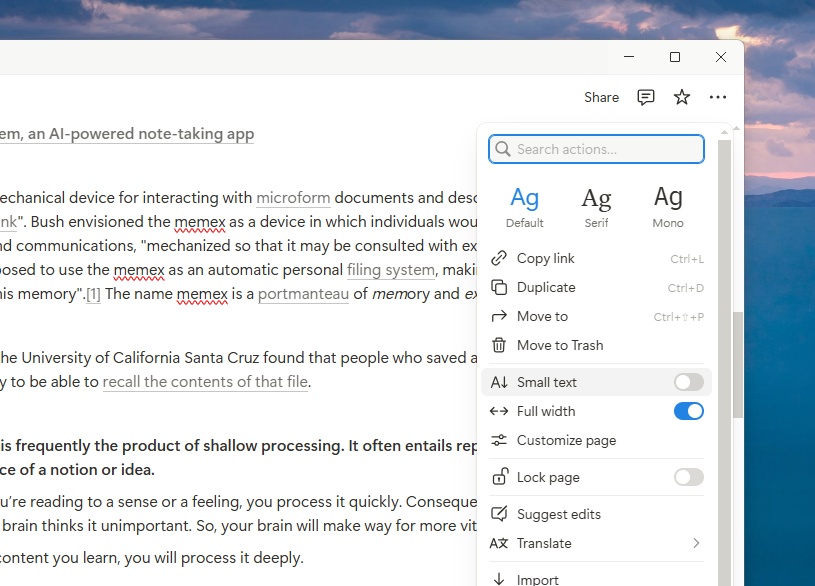
Obsidian, on the other hand, offers a clutter-free space for you to write. It neatly tucks away all the buttons and menus and reveals them only when you request it, keeping only the doc front and center. I also like that you can precisely customize the text and the fonts. As opposed to Notion's "blocks," Obsidian uses Markdown, a lightweight formatting language, but you don't have to learn it to customize your text. You can just use standard options like bold, italic, and more.

And because Obsidian is based on Markdown, your notes can be edited by any application that can open text files. Notion, on the other hand, stores content in its proprietary database. If Obsidian ever shuts down, there's no worry about having to export your notes to a new application. All your notes, tags, and links are still there in text files. If you had to, you could open those notes with any text editor on any OS. If Notion shuts down, it won't be as easy.
As a writer, another Obsidian trait I prefer over Notion is that it's offline-friendly. It saves your notes locally on your devices (unless you opt in to syncing them), so they're always accessible and fast to load. If you're documenting sensitive material, this ensures privacy, too.
Notion lets you document everything and do anything with it—including with your team
More than just a note-taking app, Notion is a productivity platform for teams and professionals.
On both Notion and Obsidian, you'll find countless ways to organize your knowledge base and develop wikis for your data. But Notion goes above and beyond plain text. You can create forms, charts, timelines, calendar schedules, Gantt charts, and anything else you can think of. Plus, it can automate this data, make it live, connect it to third-party services like Slack, and update it according to your set commands. If you're working with a team, its real-time collaboration tools will come in handy too, something that's completely missing on Obsidian.
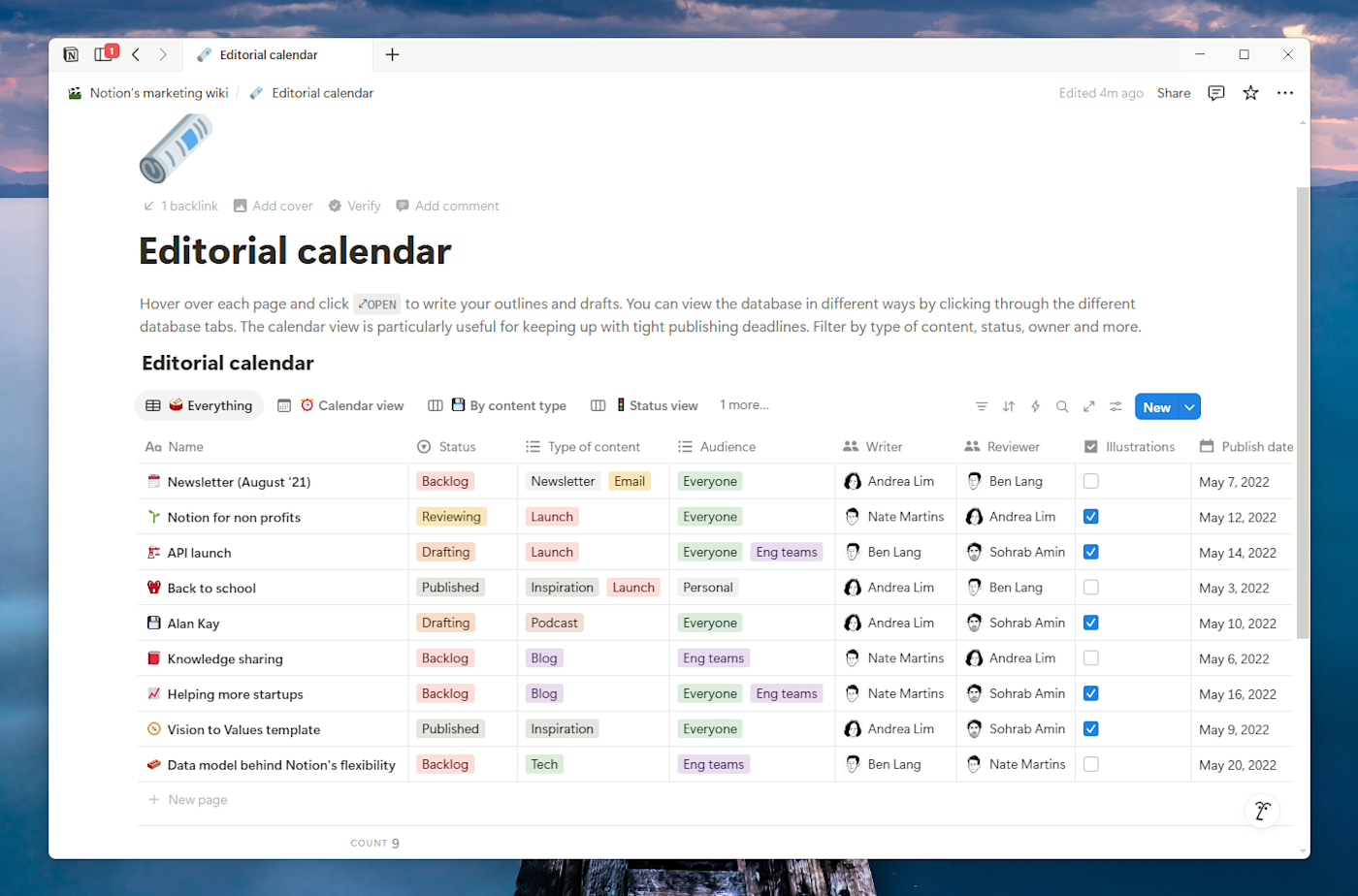
Say you want to publish an online form. You can make it in Notion and connect it to a table in another note (or page, as Notion calls it). As people feed data into the form, the table will update automatically in real-time. Want to post a job listing? Creating a web page for it from Notion will take no more than a few minutes.
Obsidian, on the other hand, excels at helping you turn your collected information into insights. You can create links between multiple notes by simply typing in double brackets around keywords, and as this heterarchical network expands, you can comfortably visualize it and understand it better on a graph view, where nodes are connected based on their relations rather than just proximity, like folders. Similarly, you can flesh out your ideas and concepts on a canvas, importing text and media as individual blocks and developing links between them, like a not-terrifying crime board.
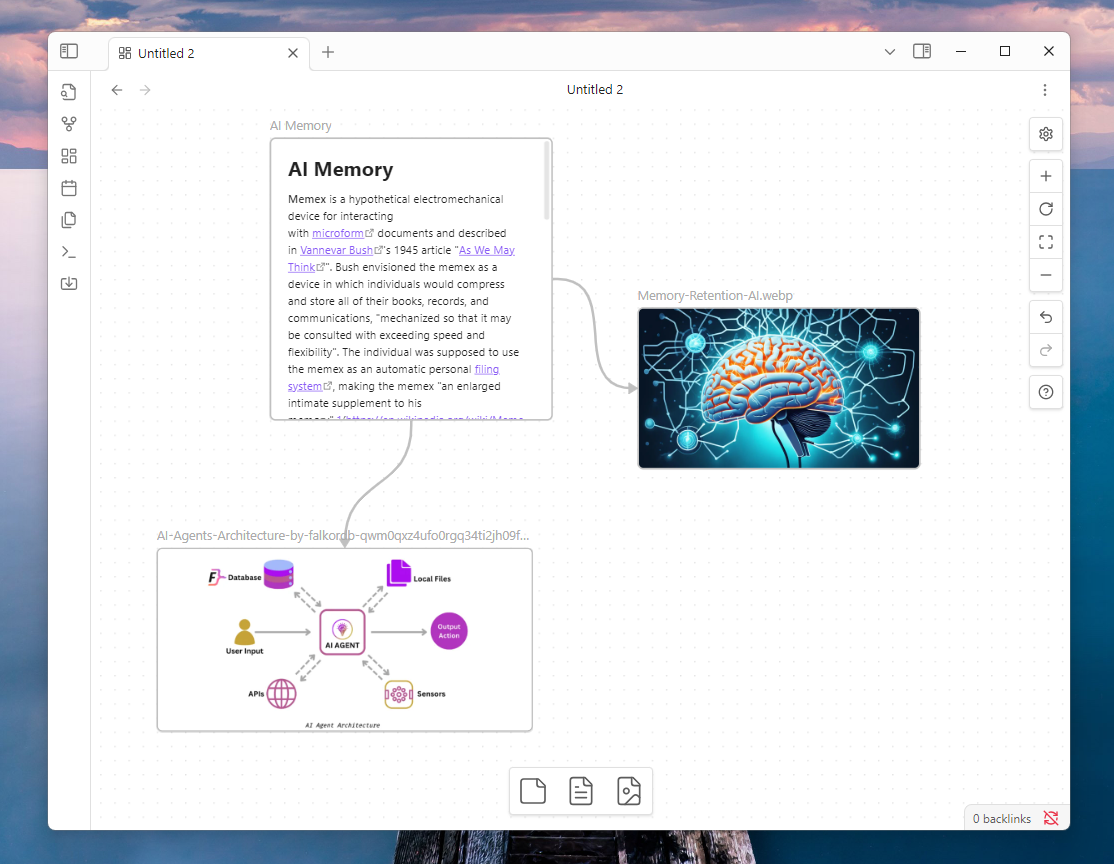
Obsidian is more customizable; Notion offers more templates
Obsidian's customizability isn't restricted to the text. If its default, mechanical-looking theme isn't working out for you, you can explore dozens of community-made alternatives and install a complete makeover. The free "Minimal" and "Things" themes, for example, add a dash of modern design to the interface.
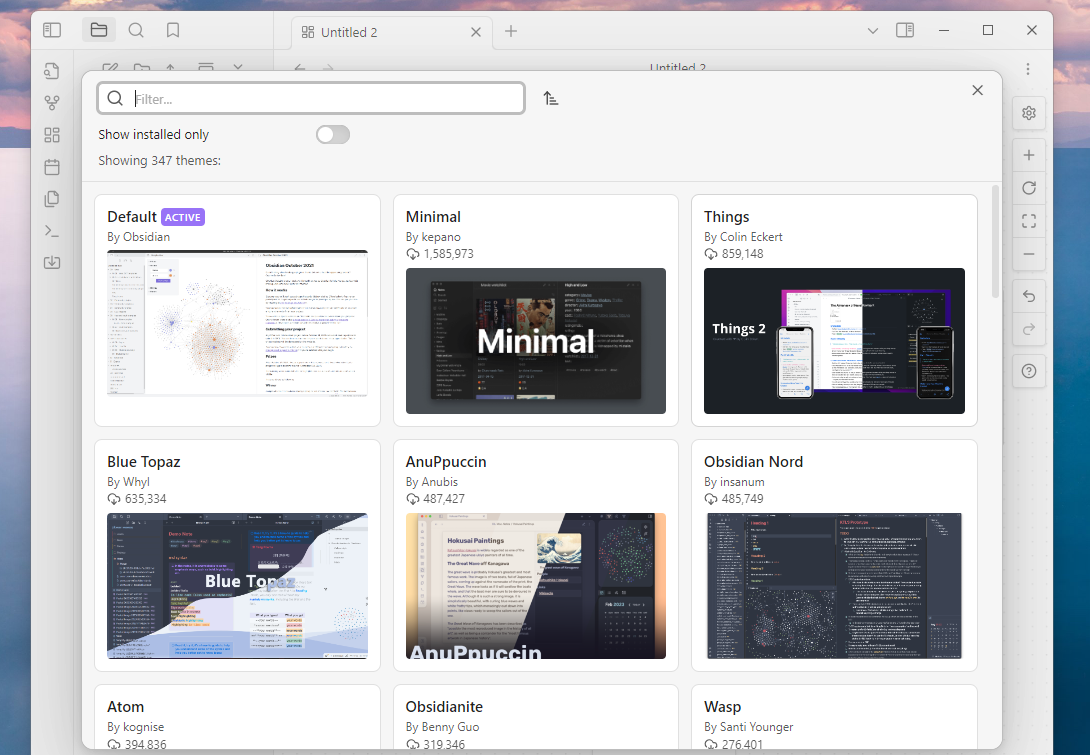
Another highlight of Obsidian is that many of its core functions are set up as plugins, which means you can easily disable a feature if you don't need it, and install more if you need one that's not available natively. For instance, to update a text's formatting, you have to select and right-click it. For quicker access, you can instead install Obsidian Hover Editor, which brings a Notion-style pop-up.
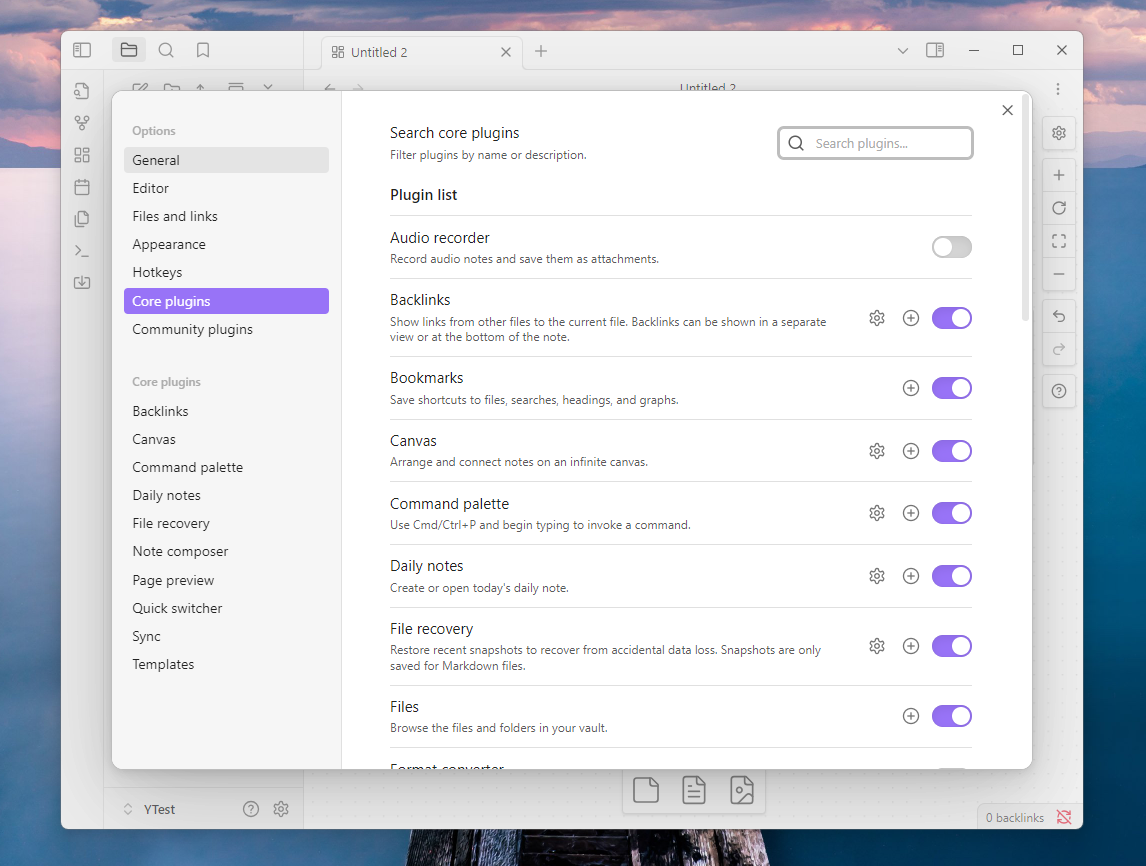
You can't tweak much about how Notion looks. But its community marketplace focuses on page templates: you can browse endless layouts for a variety of purposes, from a habit tracker to a personal finance manager.
Notion automates your knowledge with AI
One of the ways Notion particularly stands out from Obsidian is with its AI assistant. You'll find traces of it on nearly every section inside its app. Whenever you select text, for example, it brings up an "Ask AI" shortcut, from which you can prompt it to improve your writing, check for grammatical errors, or get help with your code.
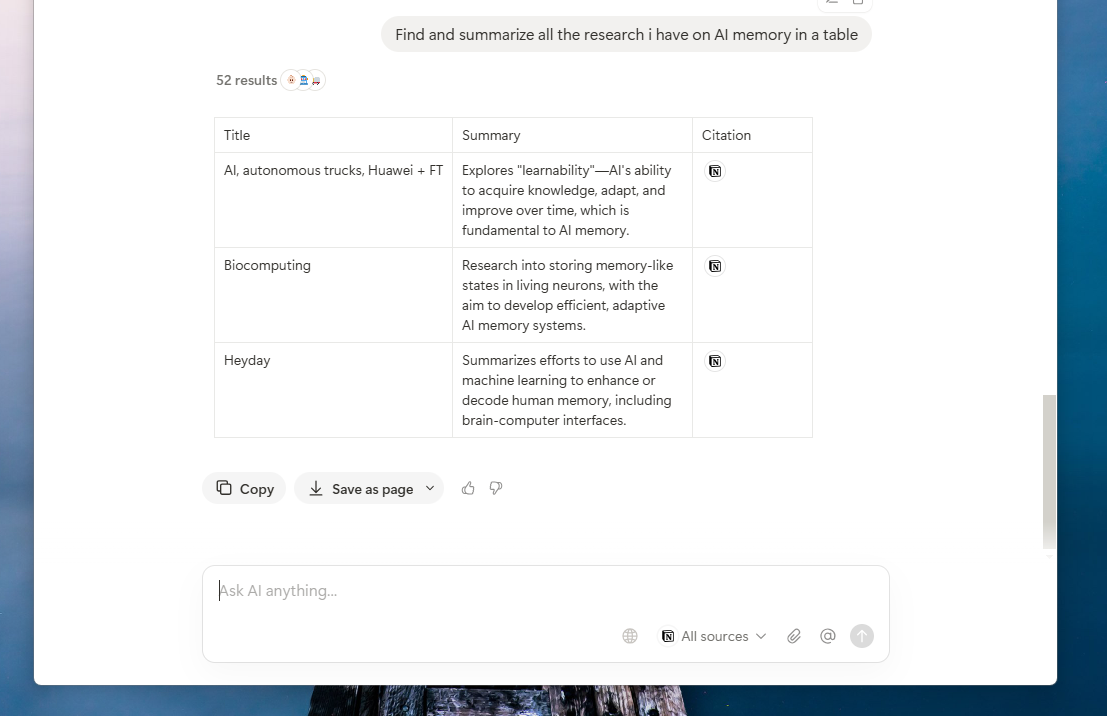
My favorite route to access Notion AI, however, is through the universal search. Because it heavily integrates with your notes, it has the necessary context to answer practical, personal questions and execute actions based on them. I can, for example, ask it to summarize every time I've researched a particular topic and save it as a table in a new note. It'll even scrub through the information on my connected, third-party apps, like Slack messages or Google Drive files.
Obsidian doesn't come with any AI features out of the box, but you can install third-party plugins to, say, directly access a ChatGPT-based bot.
Notion integrates with Zapier
Obsidian has a whole host of third-party plugins, which makes it a dream for tinkerers who want a very specific setup for their notes. But because it's hosted locally, it doesn't integrate directly with other software, so it's much more siloed.
Notion, on the other hand, has hundreds of integrations for tools like Google Drive, Asana, Calendly, Slack, Jira, Teams, and other apps that power your business. With Notion's Zapier integration, that number increases to thousands of apps, so you can connect Notion to any app in your tech stack.
This means Notion can become your source of truth, connected to every other app you use, so you can build custom solutions and orchestrate all your workflows. Learn more about how to automate Notion, or get started with one of these pre-made templates.
Add new Google Calendar events to databases in Notion
Save new tasks in Google Tasks in Notion databases
Zapier is the most connected AI orchestration platform—integrating with thousands of apps from partners like Google, Salesforce, and Microsoft. Use interfaces, data tables, and logic to build secure, automated, AI-powered systems for your business-critical workflows across your organization's technology stack. Learn more.
Notion and Obsidian are (mostly) free
For most people, including me, Notion's free plan is more than enough. It gives you uninterrupted access to its note-taking features, including beautifully designed mobile apps, and its supplementary services, such as Notion Calendar and Notion Mail. It lacks Notion AI, though; if that's important to you, you'll have to upgrade to the $20/month Business plan.
Obsidian's free plan offers access to all the app's features, albeit locally. It won't sync your data across devices or let you go through a note's update history. For these perks, you'll have to spend at least $4/month.
Notion vs Obsidian: Which is best?
Notion and Obsidian cater to different audiences. While the former works as an almost jack-of-all-trades app, Obsidian is fine-tuned for developing personal hubs of knowledge. Picking one will come down to what you expect from your note-taking app and how much you're willing to pay for premium perks.
Choose Notion if you work with a team, need to integrate your knowledge hub with the rest of your business apps, and need a multi-purpose productivity tool for your organization, including built-in AI.
Choose Obsidian if you want a personal knowledge management tool, and you love to tinker with apps to create the perfect setup for yourself.
Related reading:






